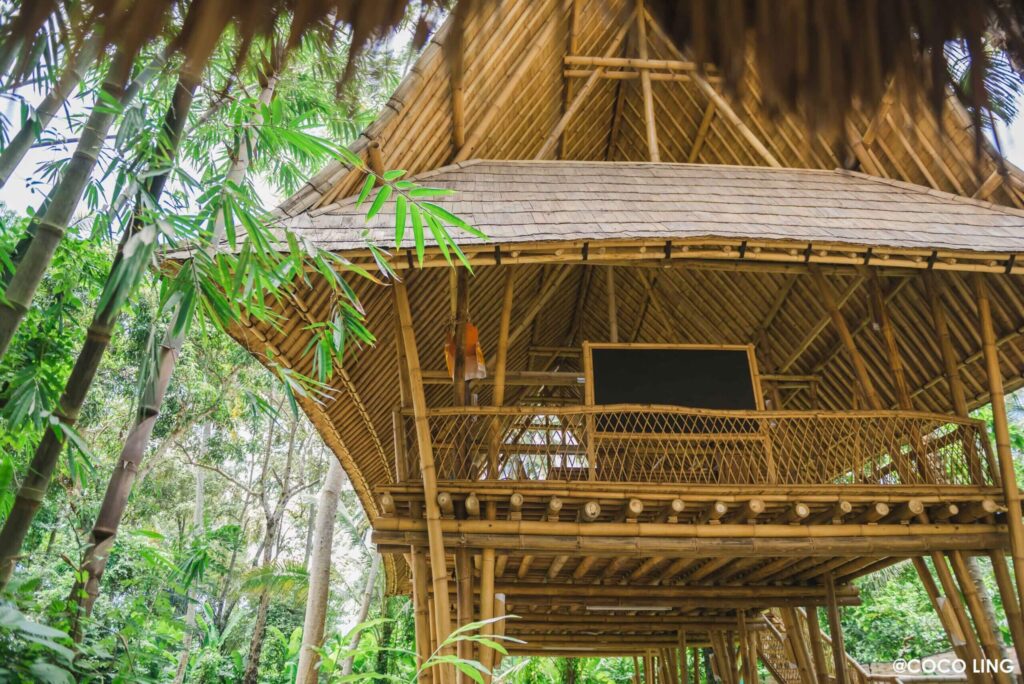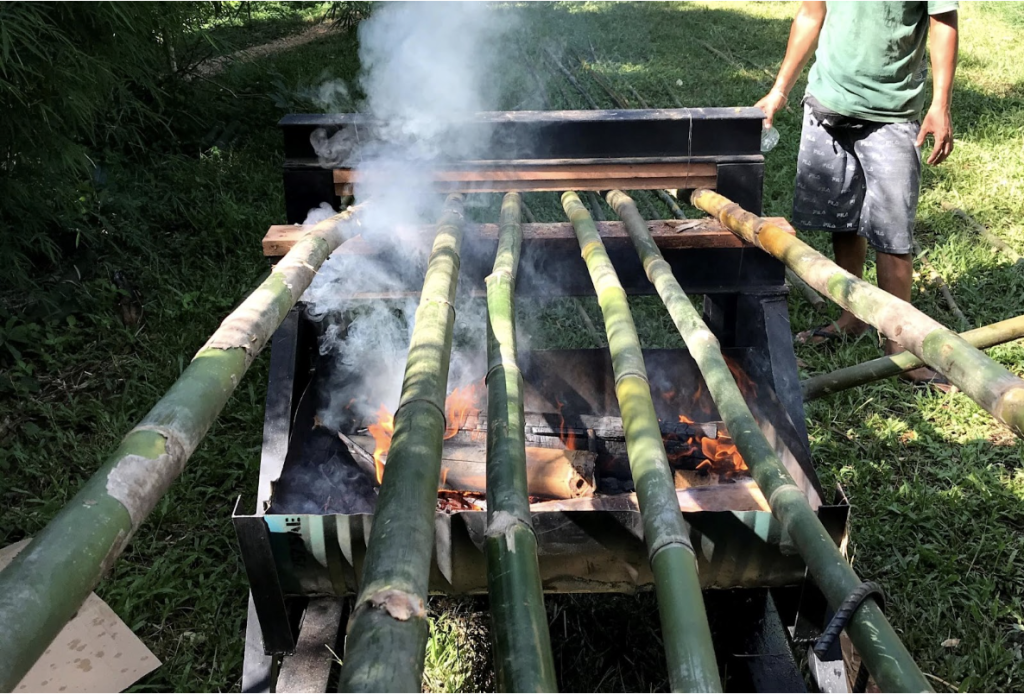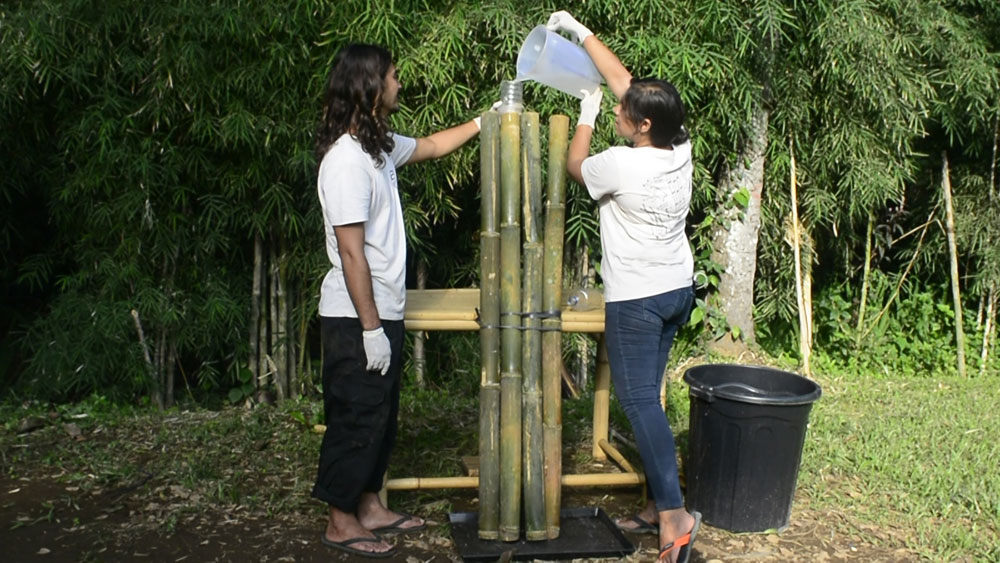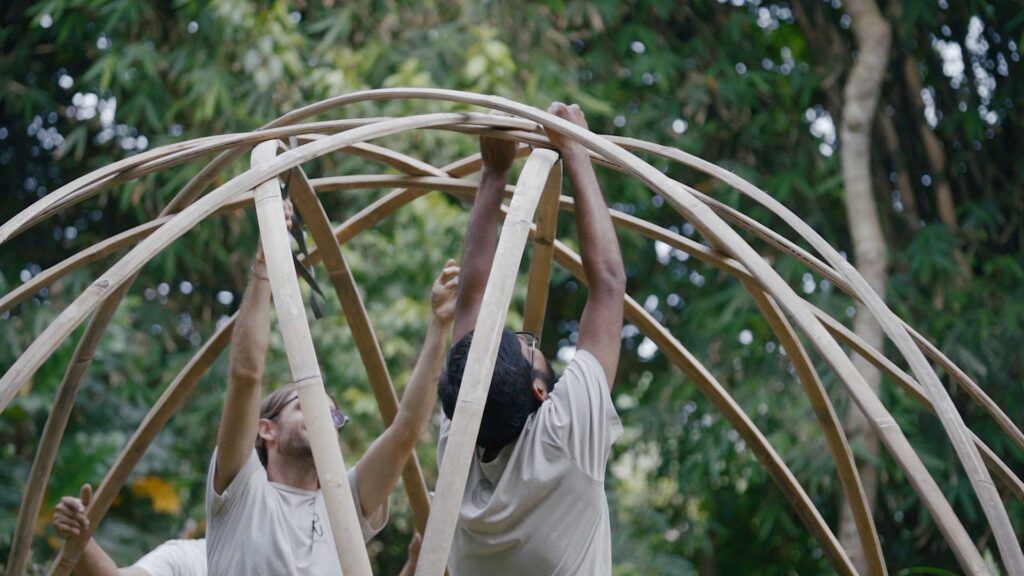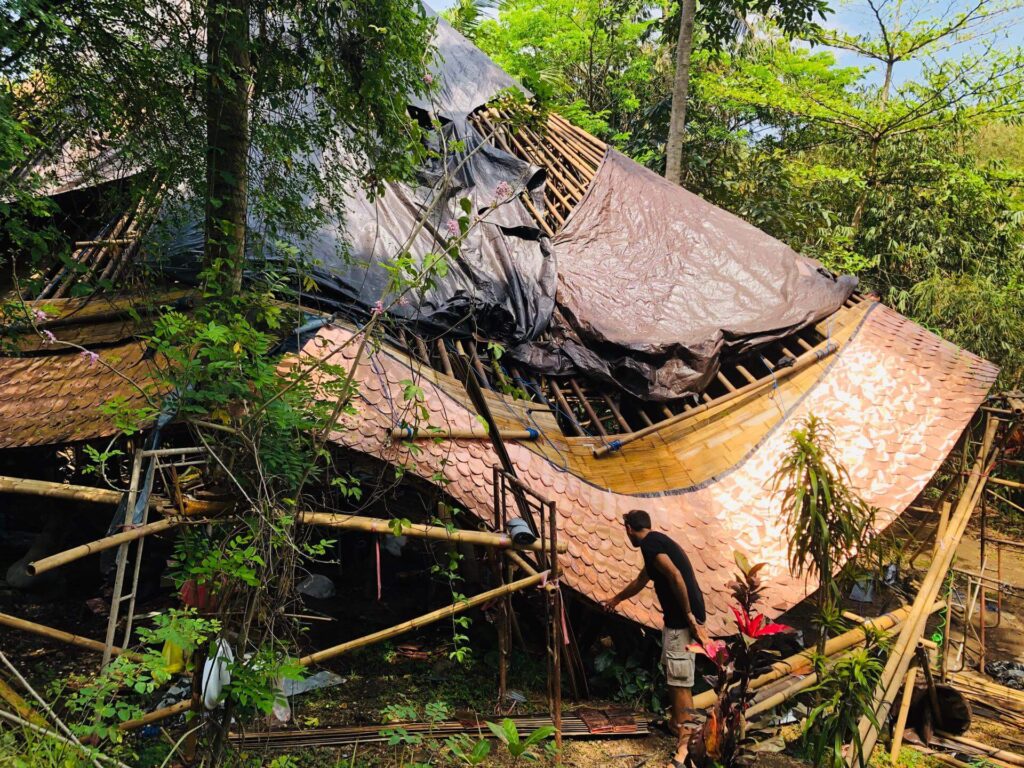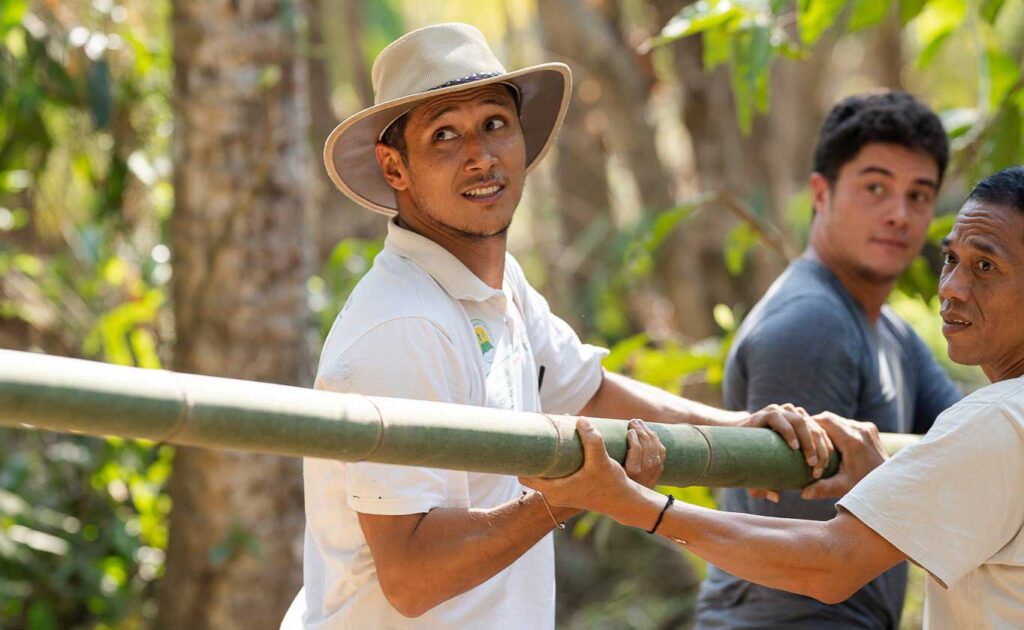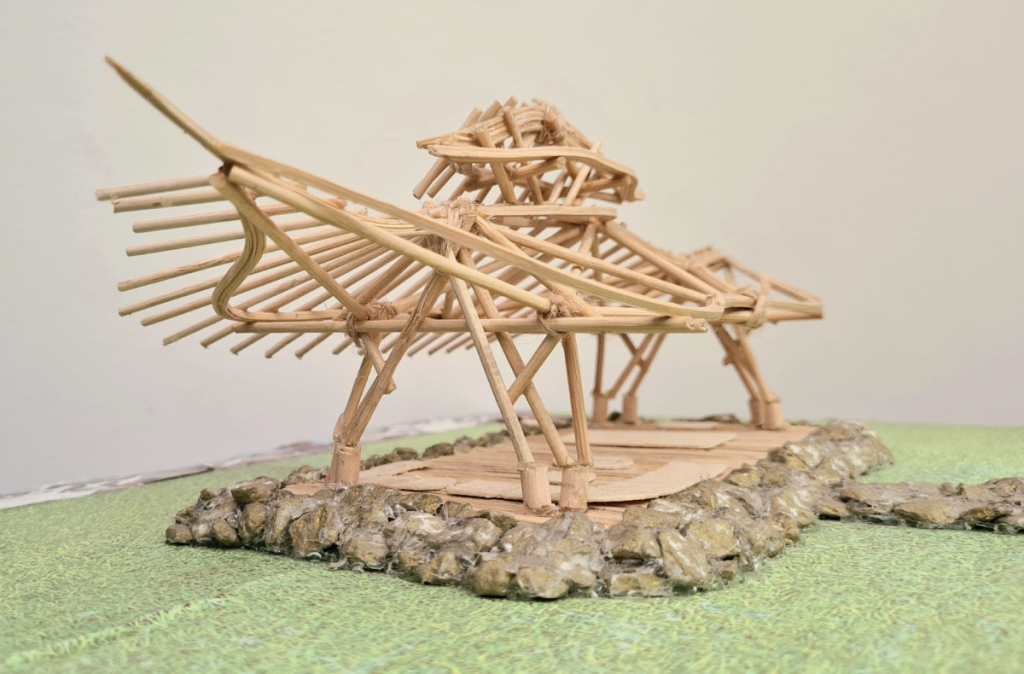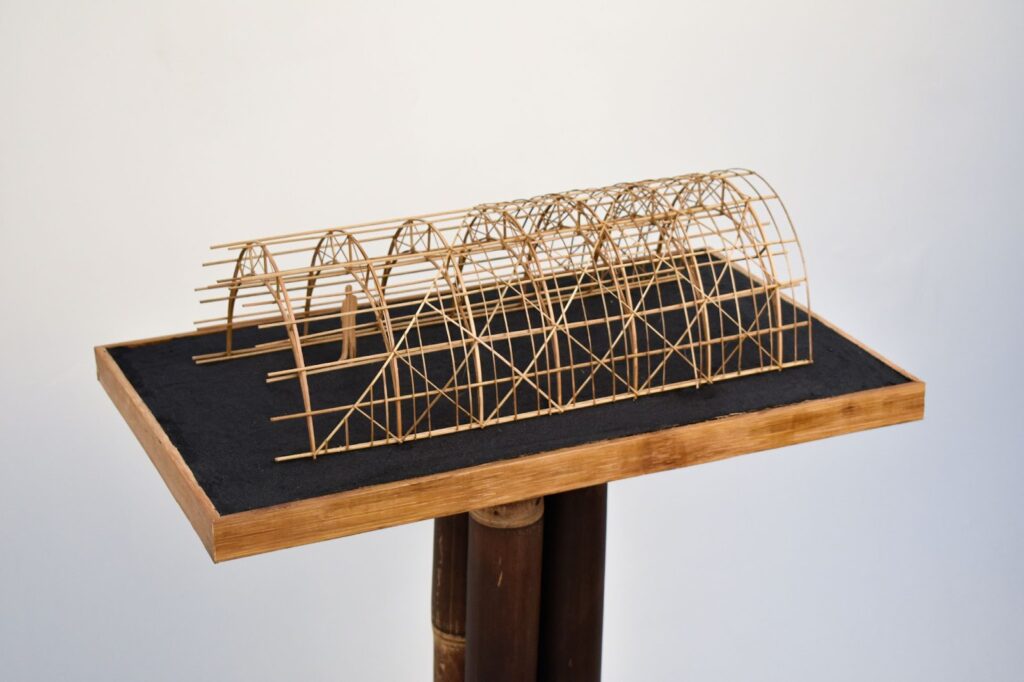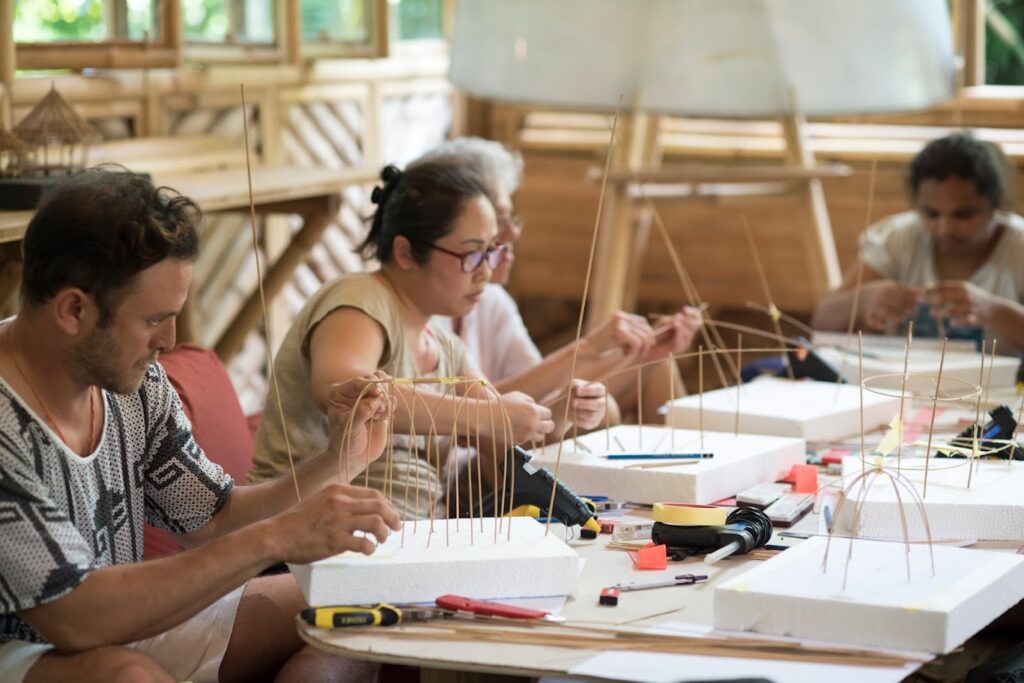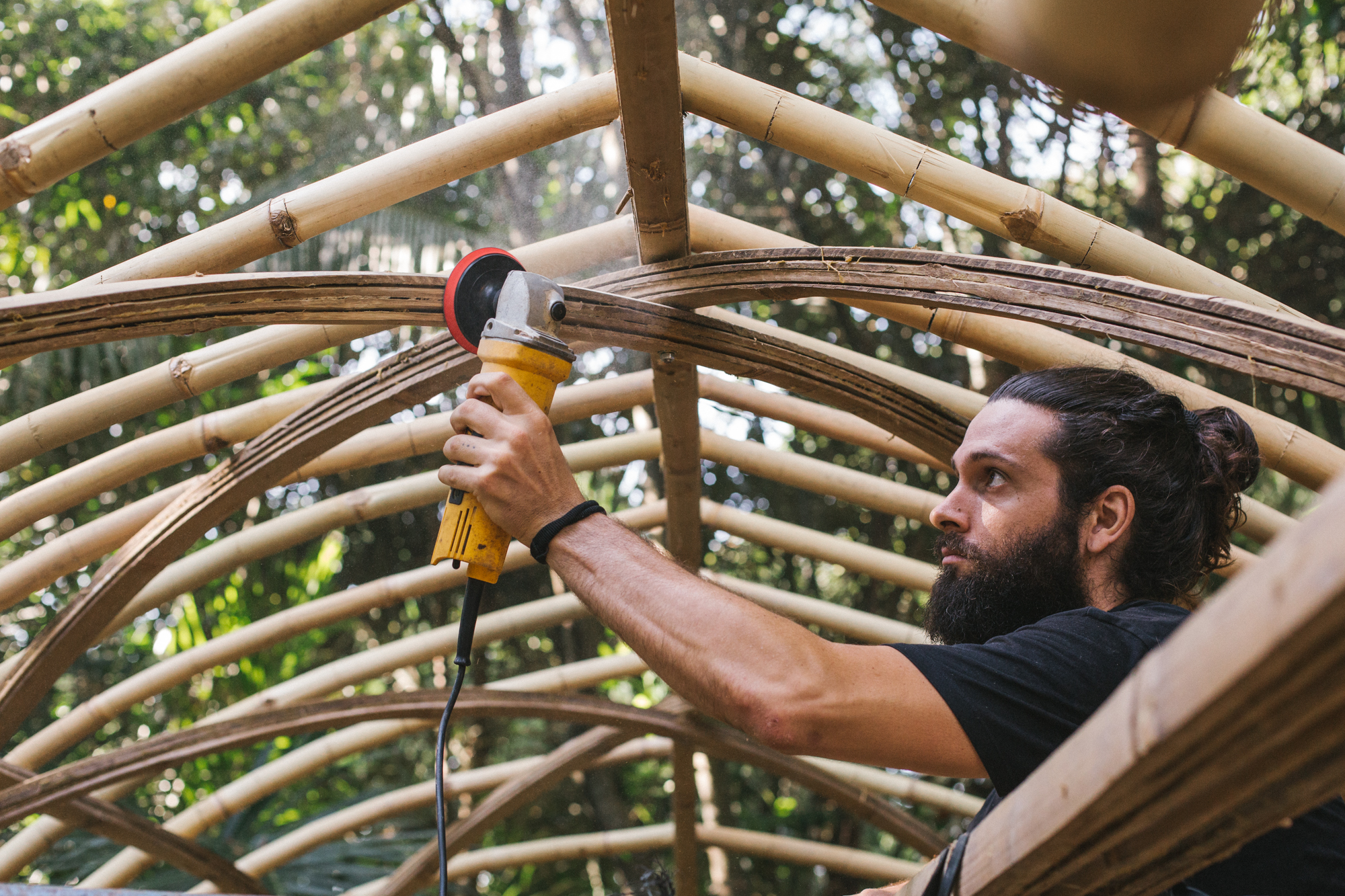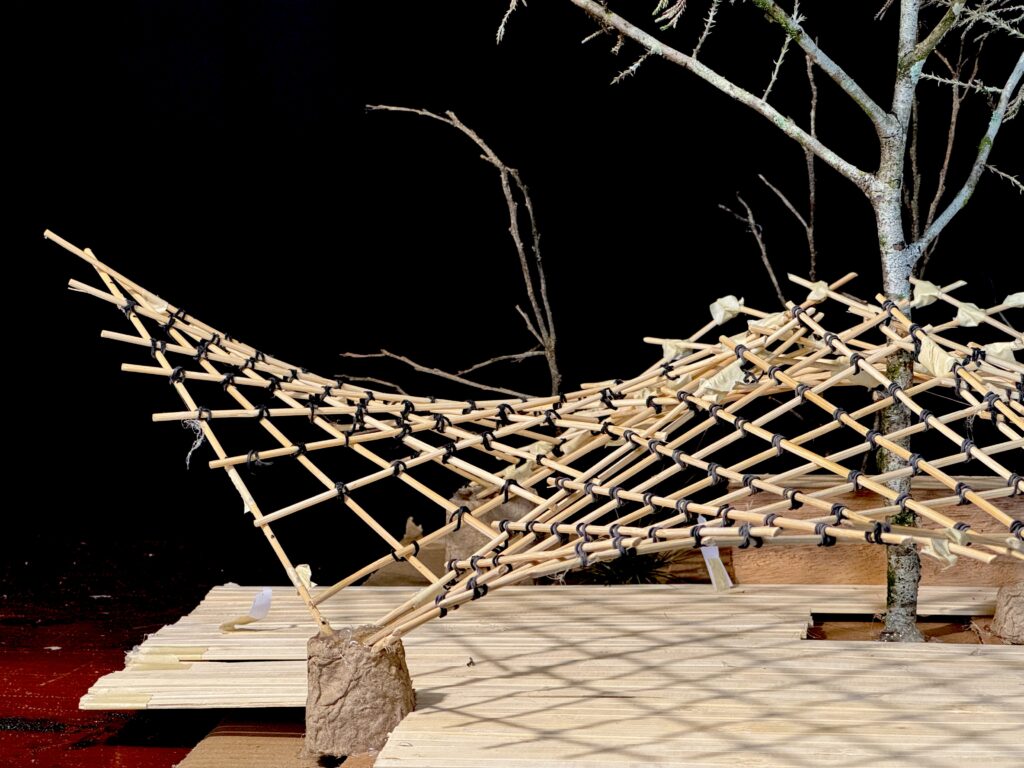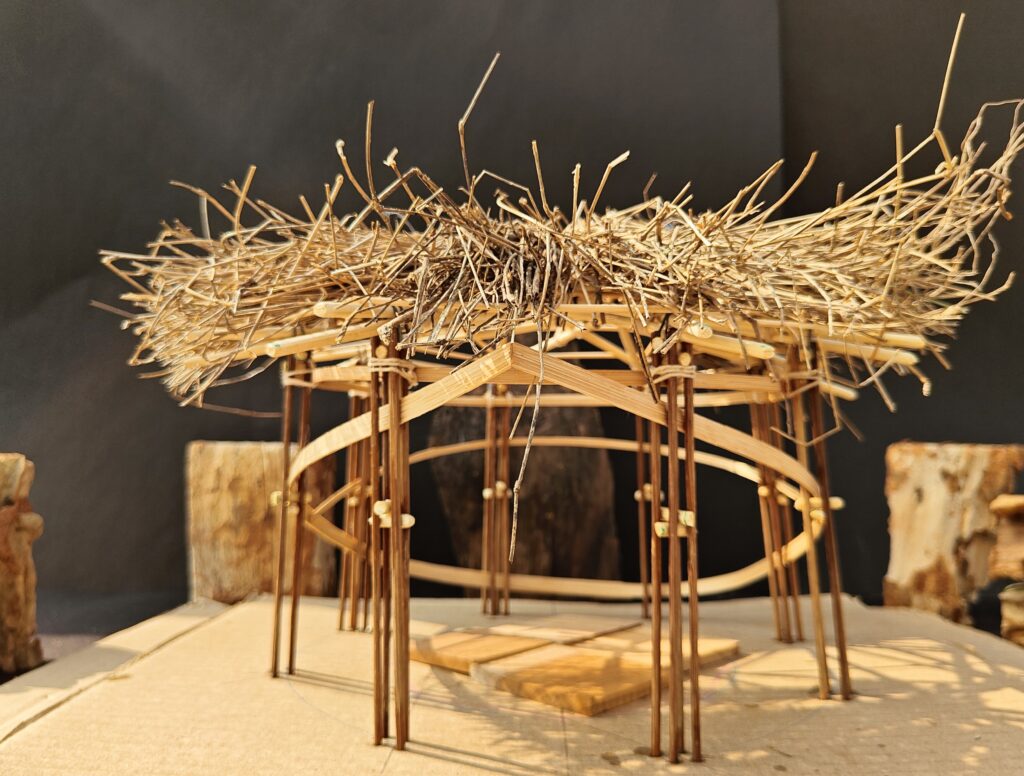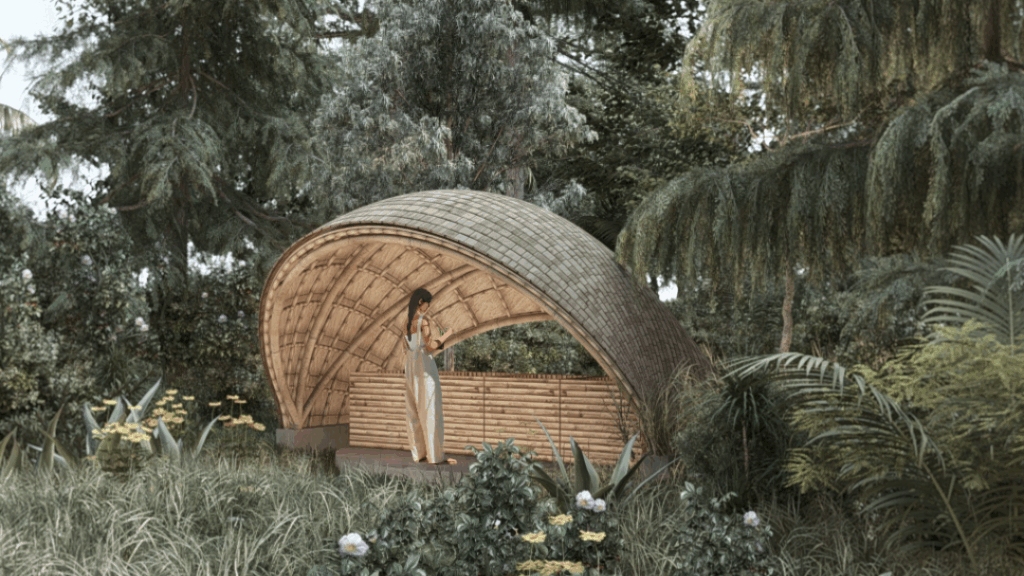A Bamboo Community Center Inspired by Cacao Pods
By | February 11, 2025 | Student Work -
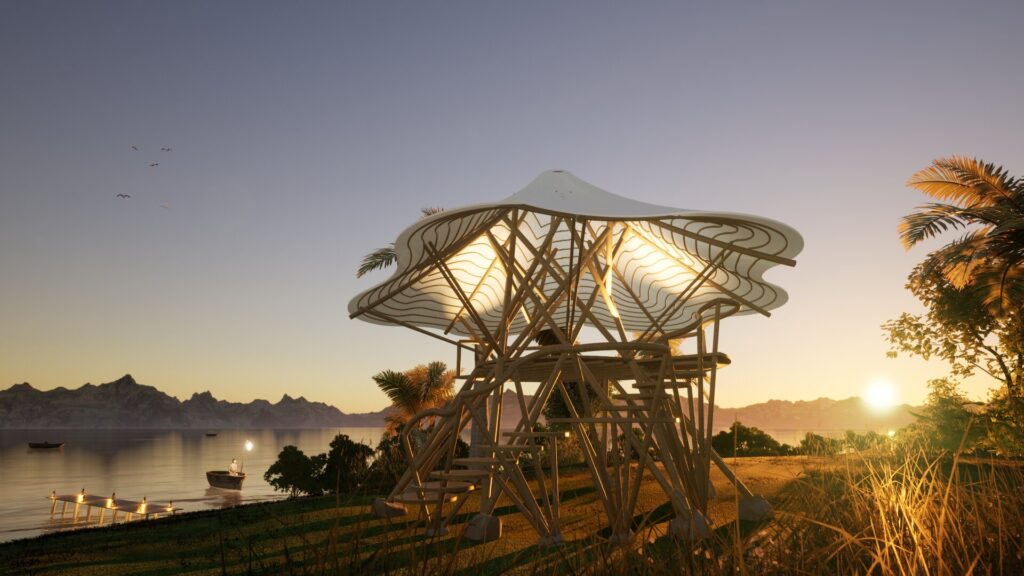
Nachely designed a community center inspired by the local flora in Panama. The center serves as a space for gathering for the local Ngäbe Buglé peoples.
Hi! I am Nachely Rivera, a 27-year-old architect from Panama with a strong passion for bamboo. My journey as a digital nomad has taken me to various places around the world, enriching my architectural perspective. It was during my time in Bali that bamboo became a significant part of my career. Although I initially wasn’t interested in bamboo, I soon became fascinated by its potential. Now, I lead my company, DUAGUA S.A., which focuses on bamboo export and sustainable architectural design.
When I returned to Panama, I realized that we have natural resources similar to those in Indonesia. However, bamboo is often wrongly associated with “poverty” in my country. This misconception drove me to learn more about bamboo, through Bamboo U’s The Fundamentals of Building with Bamboo. This was especially because in countries like Colombia and various regions of Asia, bamboo is transforming traditional architecture. I’m drawn to bamboo not only for its positive environmental impact but also for its outstanding structural properties.
The Bamboo U course highlighted the incredible versatility of bamboo, including its treatments, cultivation processes, and architectural applications. This course influenced my project, which is a community center inspired by the Ngäbe Buglé indigenous community from my home province Bocas del Toro, Panama. Bamboo U provided me with the tools, inspiration, and feedback needed to refine my design and bring it to life.
My project is called Bamíka and it is a local community center made from Guadua angustifolia bamboo, a locally available species. The space is for relaxation and socializing, where people can come together to spend quality time with each other.
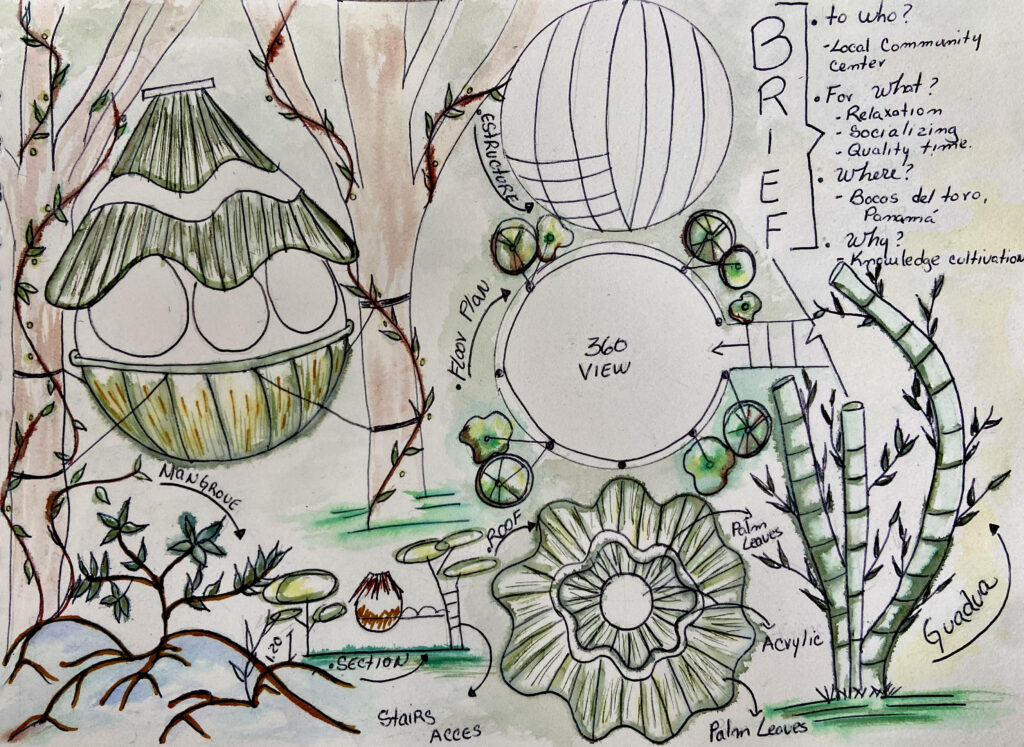
Related: The Torii Pavilion: A Gathering Space Embodying Energy Flow
The initial idea was to create a “hanging pod” that could be used by both Ngäbe Buglé locals and visitors to Bocas del Toro, Panama. During the design phase, I realized the project needed to fully reflect the cultural identity of this indigenous group. This led me to incorporate cacao, which is a significant cultural element of the region.
I chose to use a reciprocal tower structure with beams in the roof. This is because of how it efficiently distributes loads and adapts well to organic shapes inspired by cacao. The tower was designed to be slender. This was inspired by the “stamens” of cacao flowers, which help provide the flower with its shape. This design not only provides structural stability but also evokes the elegance of flowers.
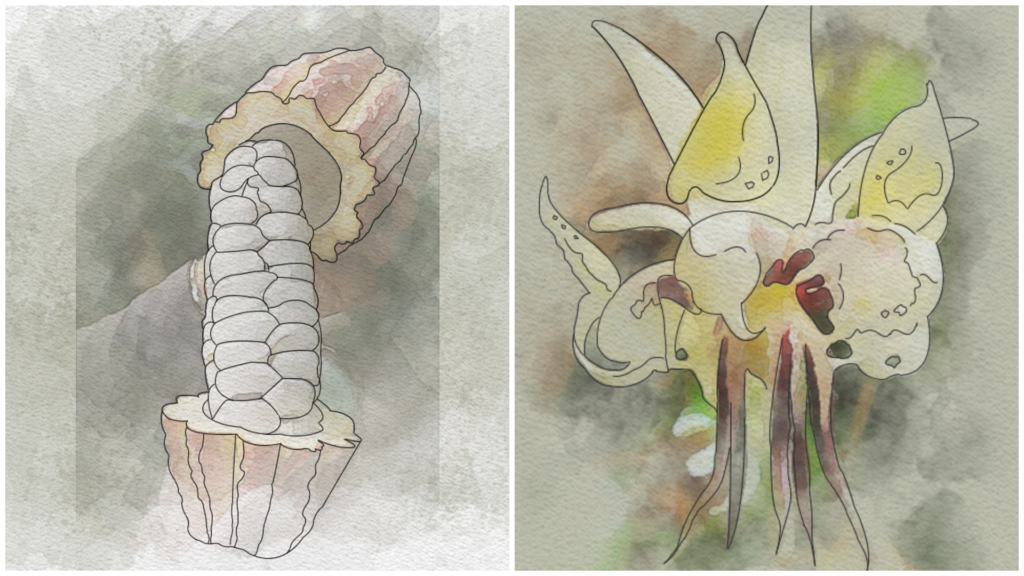
The roof is designed to look like a fruit, with an organic shape similar to a cacao pod. The curved shape of the roof is inspired by the inside of an open cacao pod, giving it a unique and authentic look. The canopy-like roof is colored like the “white” cacao bean, connecting the design to local cultivation.
By adopting the reciprocal tower for the community center, it would make construction easier. It would also reflect the traditional practices of the Ngäbe Buglé community, who elevate their homes to improve ventilation and reduce soil moisture.
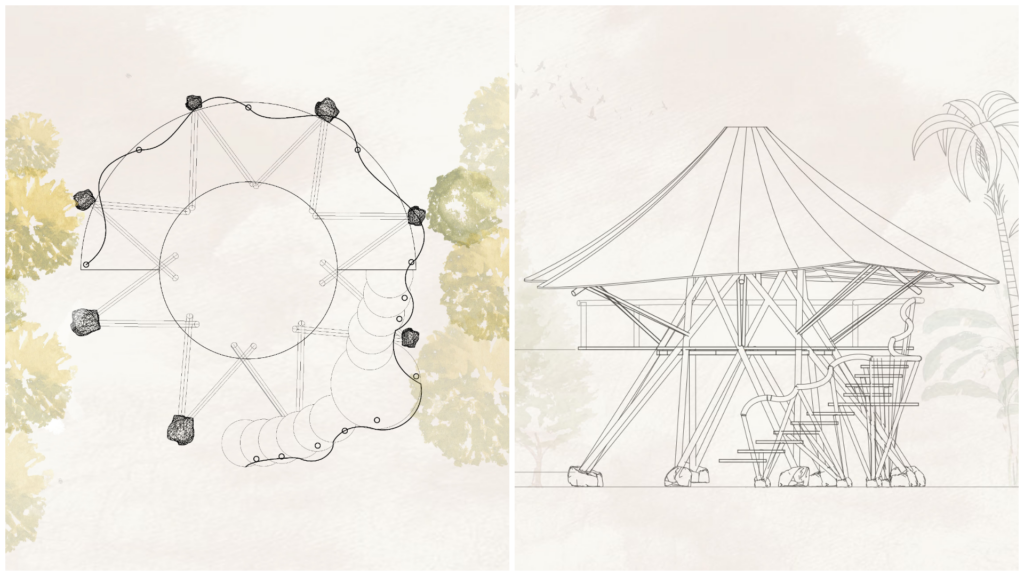
The final design aims to create a space that combines functionality, durability, and a strong connection to local traditions. The structure is intended as a gathering and recreational space where locals and visitors can share experiences in an inspiring setting. The pavilion offers stunning sunset views and a deep connection to nature, providing a unique experience that highlights the beauty of Bocas del Toro’s natural and cultural environment.
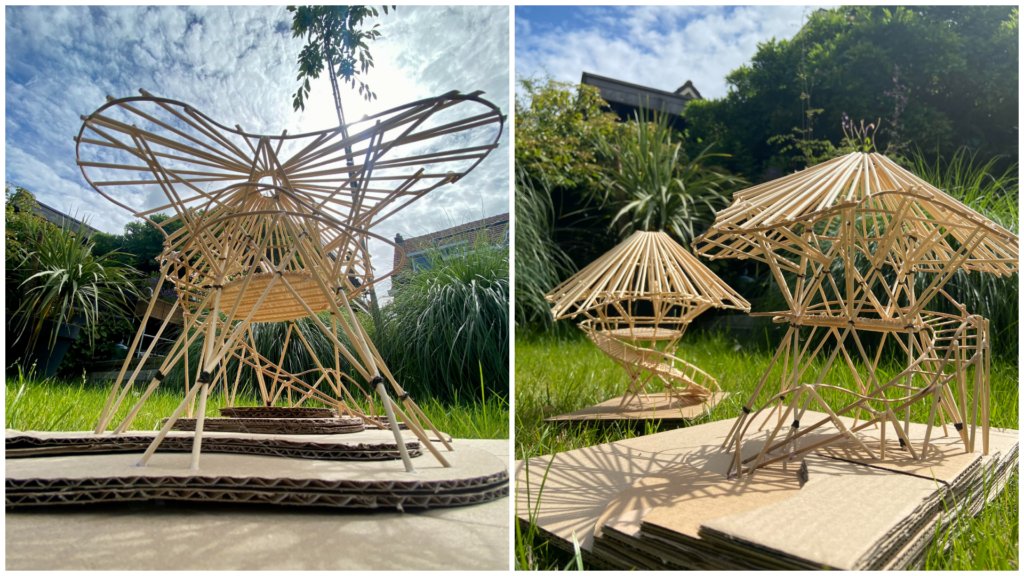
During the Bamboo U course, I gained valuable knowledge that guided my design of the community center. The modules on bamboo construction techniques and treatments for improving material durability were especially helpful. My favorite module was the one by Elora Hardy and the 8 Design Principles from IBUKU’s Ethos. This module deepened my understanding of how to integrate bamboo harmoniously into its environment and helped me consider how the building will affect its users and how I want them to experience the space.
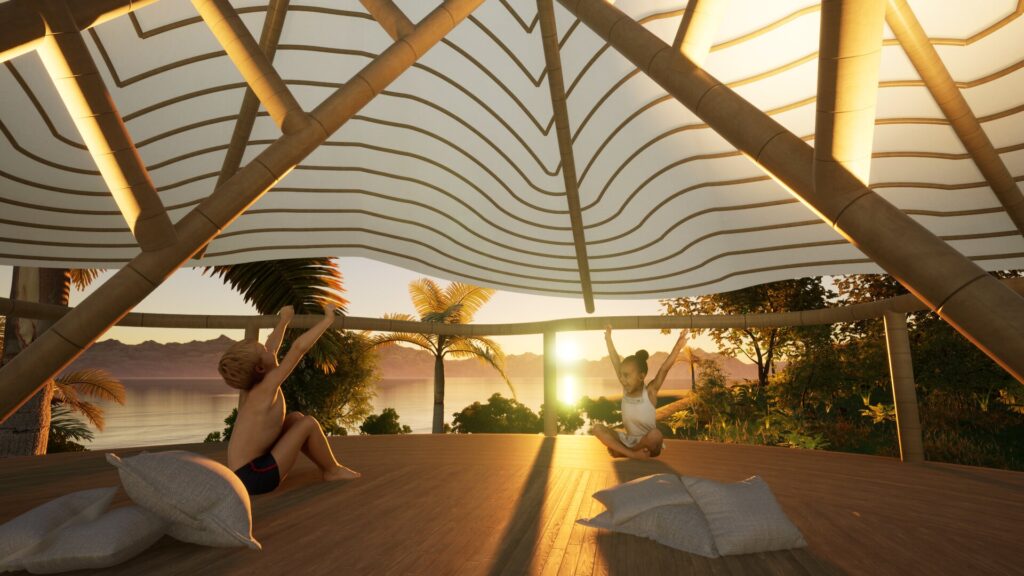
One of the most significant takeaways from the Bamboo U course was the idea that “you don’t need to be an expert to inspire change.” The course helped me view bamboo not just as a material, but as a versatile plant that allows for innovative design and construction. I also gained valuable skills in creating both physical models and digital designs using tools like Grasshopper and Rhino.
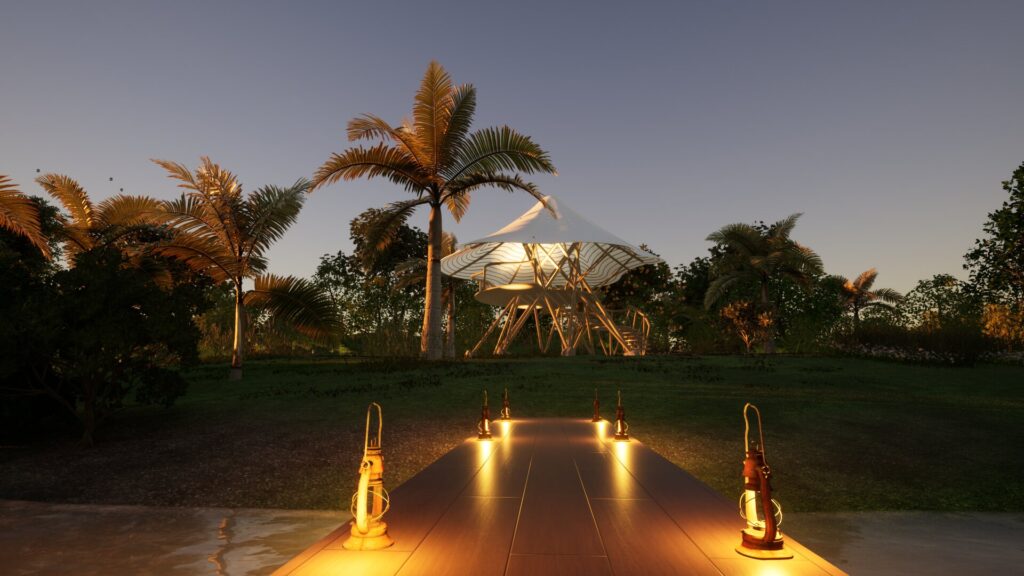
Furthermore, the principles I learned from local builders in Bali over a year ago continue to inspire me. In Panama, where few professionals possess this knowledge, I feel both privileged and responsible to share these insights and continue pushing the boundaries of sustainable design. Thank you, Bamboo U, for empowering me and fueling my passion for bamboo.
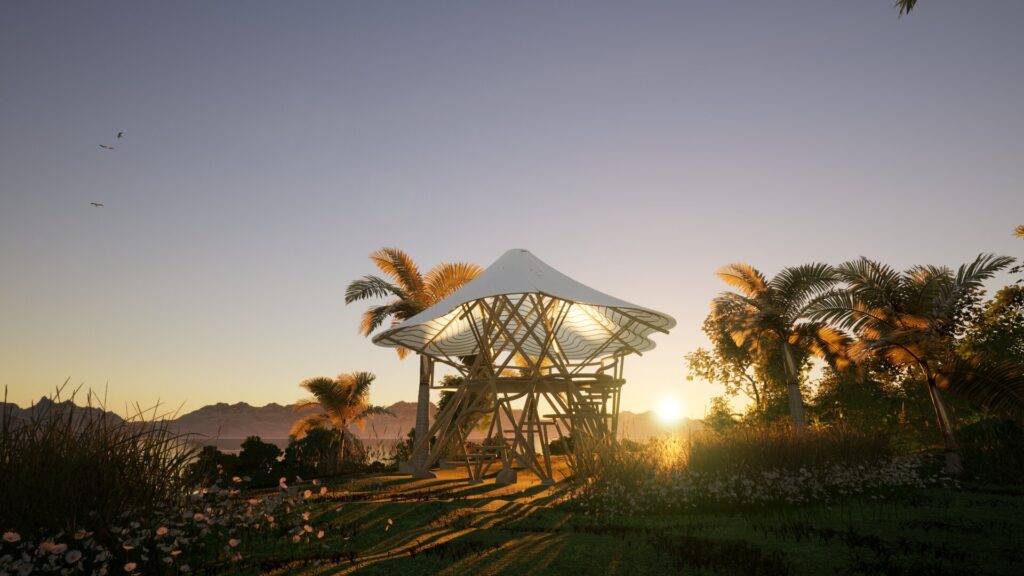
Want to learn how to design and build your own bamboo structure? Join us either online or in-person for one of our courses! Sign up HERE!


